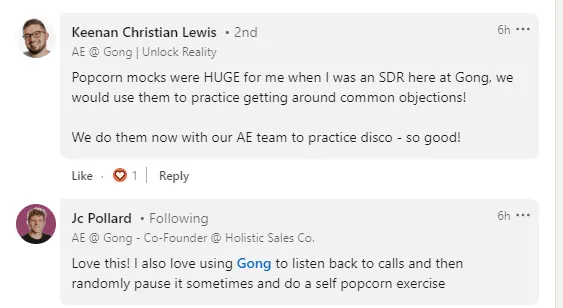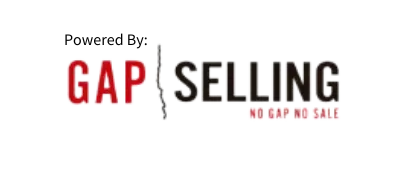Sales Leadership: How to Turn Sales Call Reviews into Popcorn Moments—Ditch the Checklist
It's been beaten into every sales leader - "call coaching". What does effective call coaching look like? When you view it through the - does this change behavior lens, you may be surprised at why Maggie Maloney of Televerde decided to DITCH the discovery call script and lean into the "popcorn method" for call review.
Just two weeks in, the behaviors have changed and her approach may just give you the nudge you need to change how you approach coaching and discovery, but also to quickly be able to add quality opportunities to that pipeline that convert (let's be honest - we are seeing win rates sub 10%).
Leadership Challenge:
For years, sales teams have relied on checklists to guide call coaching. We see it all the time.
In fact today, I saw a post with hundreds of comments claiming that they had the latest and greatest "discovery question checklist" and all this is is another process put in place that doesn't address the root.
- Your team doesn't know what business problems they solve for customers
- Your team isn't able to find those problems during discovery in a natural conversational flow
- You resort to giving the team a checklist in hopes that by guiding them on WHAT to ask for- they will magically be able to create opportunities to add to the pipe.
In theory - checklists are supposed to ensure consistency, but often, they end up with the seller so focused on what question to ask next, that when calls are recorded and listen to - it's super awkward for all parties (imagine how your buyer feels).
It's like going on a first date and it's awkward and no one knows what to say and you walk away realizing you just wasted an hour vs. the dates where convo flows and you h it it off.
Ripping Up The Checklist
Maggie realized that when she was doing call review with her SDR team that the conversation wasn't human. That everyone was over engineering the calls to hurry up to get to a desired outcome.
She threw away the checklists and instead, implemented what she calls a "freedom box".
Each seller has box with four squares: Current State, Desired Future Stage, Problem, Challenges if not fixed.
That's it! Following along with the #gapselling principles - sellers have the freedom to look for the unique problems they solve, naturally flowing in and out of conversation with the buyer.
The buyer feels heard. The seller is present. There are no scripts!
SHOCKING.
You can listen to a snip here on how Maggie does this and she weighed in on how the team initially felt.

Coaching Shift
Maggie then decided to change the way that call coaching was being done. Instead of having reps listen to calls and review how they responded to the buyer - she changed it up.
We can't anticipate what a buyer is going to say nor how they will respond to a question - so we can't rely on a script to tell us how to respond.
Instead, Maggie STOPS a call after a buyer says something and then goes around the room "popcorn style" where her team will pick up the convo taking turns asking and answering questions IN REAL TIME.
This allows them to think on the spot - to actively listen to what is being said and to ask responsive questions.
BUYERS LOVE IT.
And it's not just Maggie. Her friends from Gong chimed in on this approach as well.

TL;DR: By letting go of the discovery checklist, Maggie has empowered her sellers to think critically and act strategically. Here team is not just following a script—they’re involved in conversations, uncovering real problems, and driving towards solutions. This is what true sales leadership looks like.
BONUS
1:1s and Sales Meetings
Often we are asked what to cover during 1:1s and Sales Meetings. This resource here dives into the difference between coaching to behavior and coaching to skills. Executing on 1:1s and Team Meetings effectively provides the insight needed to know if you need to make changes or shift gears when it comes to people, process, structure or strategy BEFORE your revenue organization takes a huge left turn.
Skipping these sessions is easy to do, but may lead your team to go rouge and have a negative outcome. What to cover in each?
This document breaks down a suggested structure for both 1:1s and team meetings and you as a leader to organize your thoughts! (snag it - no it doesn't put you into a cadence or any email list).






